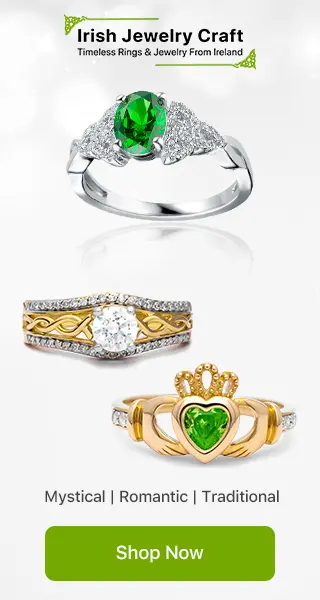Irish myths and legends provide a deep insight into the people and culture of Ireland. The famous Leprechaun is by far my favorite miniature creature from Irish folklore! There is an abundance of literature and history connected to these magical characters from the Emerald Isle. According to Irish fables, Leprechauns are mischievous little old men dressed in green, sitting at the end of a rainbow with their crock of gold! Over the years, the Leprechaun has become a famous and much loved symbol of Ireland. But where did the tale of the wee green man from Ireland begin?? Read on to find out more about the Irish Leprechaun.
What does a Leprechaun look like?
Leprechauns are faerie folk, tiny bearded old men about 2-3 feet tall. They are typically clad in a green coat; however, ancient Irish folklore also describes them as wearing red outfits. They wear buckled shoes and a pointed hat and sometimes smoke a pipe. They are devious tricksters and love practical jokes.
Origin of the Leprechaun
It is believed that Leprechauns evolved from a magical race in Irish mythology called Tuatha Dé Danann. The Tuatha Dé Danann clan invaded Ireland but were defeated and banished to live underground.
Some say the word Leprechaun comes from the old Irish word ''luchorpán'', meaning ''small body''. Others claim it is derived from the Irish term ''leath brogan'', which translates to ''shoemaker''.
The Shoemaker and his Pot of Gold
Leprechauns are traditionally cobblers or shoemakers. They are paid for their craft with gold coins and store their gold in a pot. They are famous for hiding their pot of gold at the end of a rainbow. It is believed that if you find the end of a rainbow, you will find the Leprechaun's crock of gold!
Catching a Leprechaun
If you are lucky enough to find and catch a Leprechaun, hold onto him - He will grant you 3 wishes if you release him! However, capturing one of these rogues is no easy task, and holding onto them is even trickier! They are very intelligent, and can use their magical powers to vanish into thin air in an instant. They live in rural Ireland and hide in underground caves and fairy tree trunks. If you caught a Leprechaun, what would you wish for?
Traditional Irish Music and Dancing
Leprechauns are renowned for their love of traditional Irish music and dance. They play the fiddle, tin whistle, harp, and bodhrán. It is said that because they dance so much, they constantly need new or repaired shoes. You will hear a Leprechaun before you see one. If you hear a tap-tap-tapping in the Irish countryside, it may well be the sound of a Leprechaun dancing or repairing the sole of a worn-out shoe!
A fascinating Irish legend, the mischievous Leprechaun has captivated and charmed millions of people worldwide.


